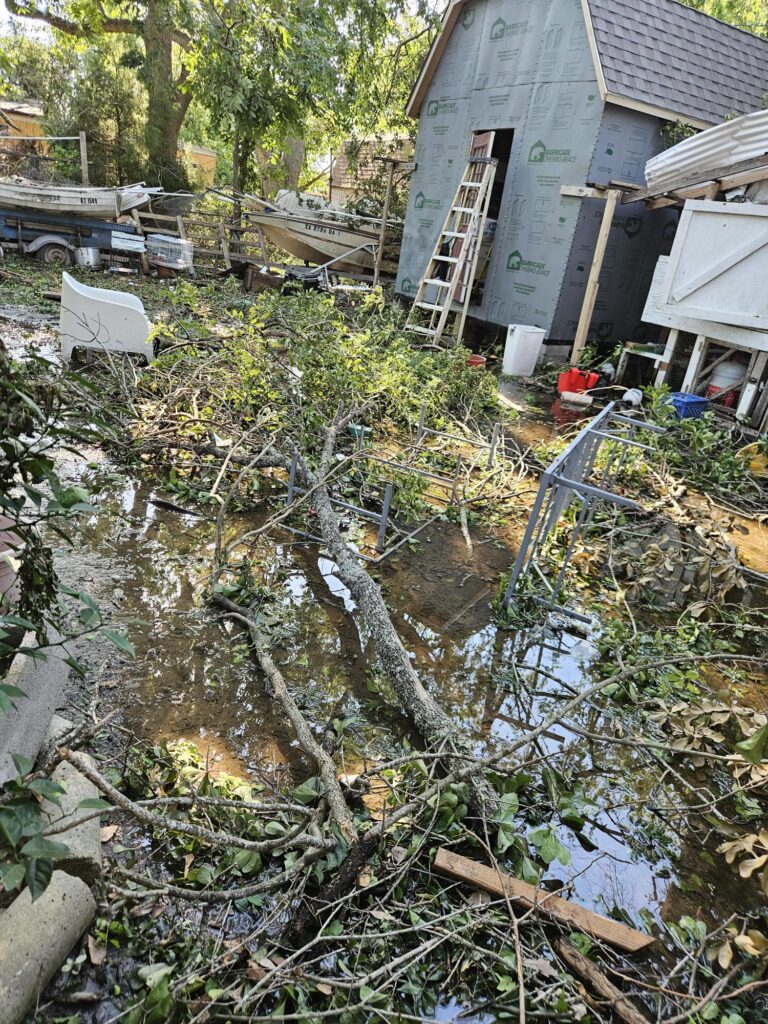Even as more than 1.2 million people in Texas remained without power after historic Hurricane Beryl hit the state this week, Team Rubicon has begun responding to the storm. The storm, which came ashore south of Houston, near Matagorda, as a Category 1 Hurricane on July 8 and caused widespread flooding, spawned multiple tornadoes, cut power to millions, and left a large amount of damage across Southeast Texas. After several days of recon work, the veteran-led disaster response nonprofit determined it would begin deploying the first disaster response volunteers—or Greyshirts—to the Lone Star state to provide Hurricane Beryl assistance on July 13.

“The damage from Hurricane Beryl was more wind damage than what was experienced from Hurricane Harvey, which produced record-breaking devastating flooding.” said longtime Greyshirt and Deputy Director of Field Leadership & Training for Team Rubicon, Traci Rankin.
“The fact many storm survivors are still without power and limited communication services this many days in after the Cat 1 Hurricane is evidence of how big of an impact Beryl was to the region.”
On Saturday, even as Houston struggles to regain power, Team Rubicon will begin deploying the first of nearly three dozen Greyshirts to Harris County to provide Hurricane Beryl assistance. Over the course of two weeks, the Greyshirts will serve in and around Houston, tarping roofs, conducting chainsaw operations to clear access to homes and critical infrastructure, bucking and limbing vegetative debris, and mucking out homes damaged by the hurricane.
Greyshirts will also be providing Hurricane Beryl assistance in Matagorda and Brazoria Counties, where hundreds of large live oak trees are down, including some on homes. Greyshirts there will spend two weeks tarping roofs, removing and managing vegetative and hurricane debris, mucking damaged homes, and providing other expedient home repairs.
The operations are the first of what is likely to be many this year. Though it made landfall in the U.S. as a Cat 1 Hurricane, Beryl had already set meteorological records in what is expected to be a historic year: It was the earliest-forming Category 5 on record in the Atlantic and only second-ever Cat 5 hurricane—to date—in the month of July.



